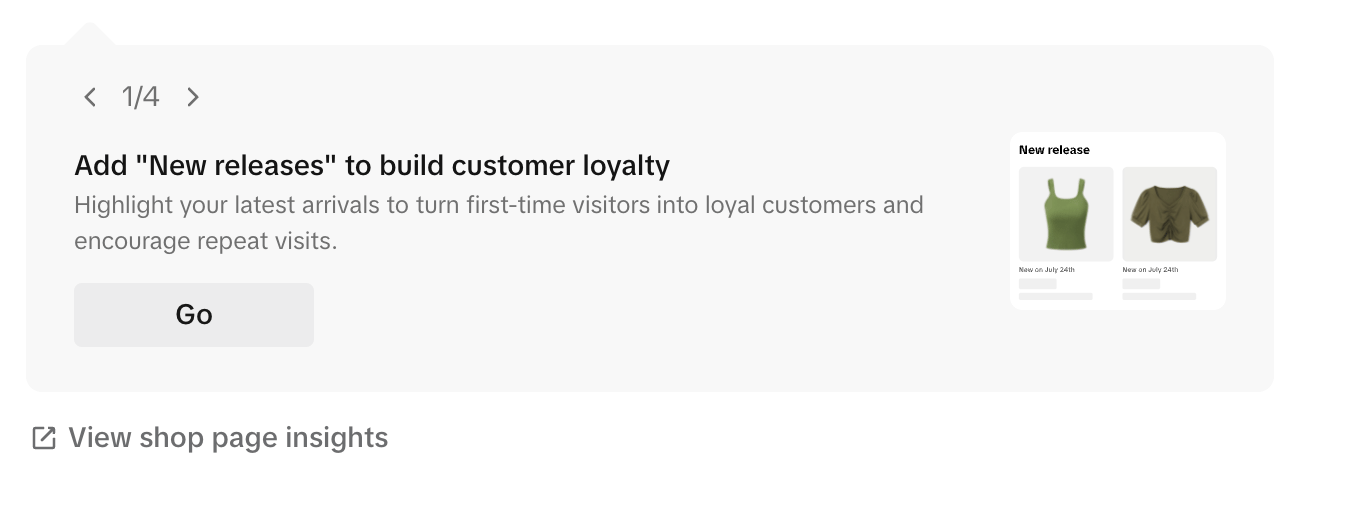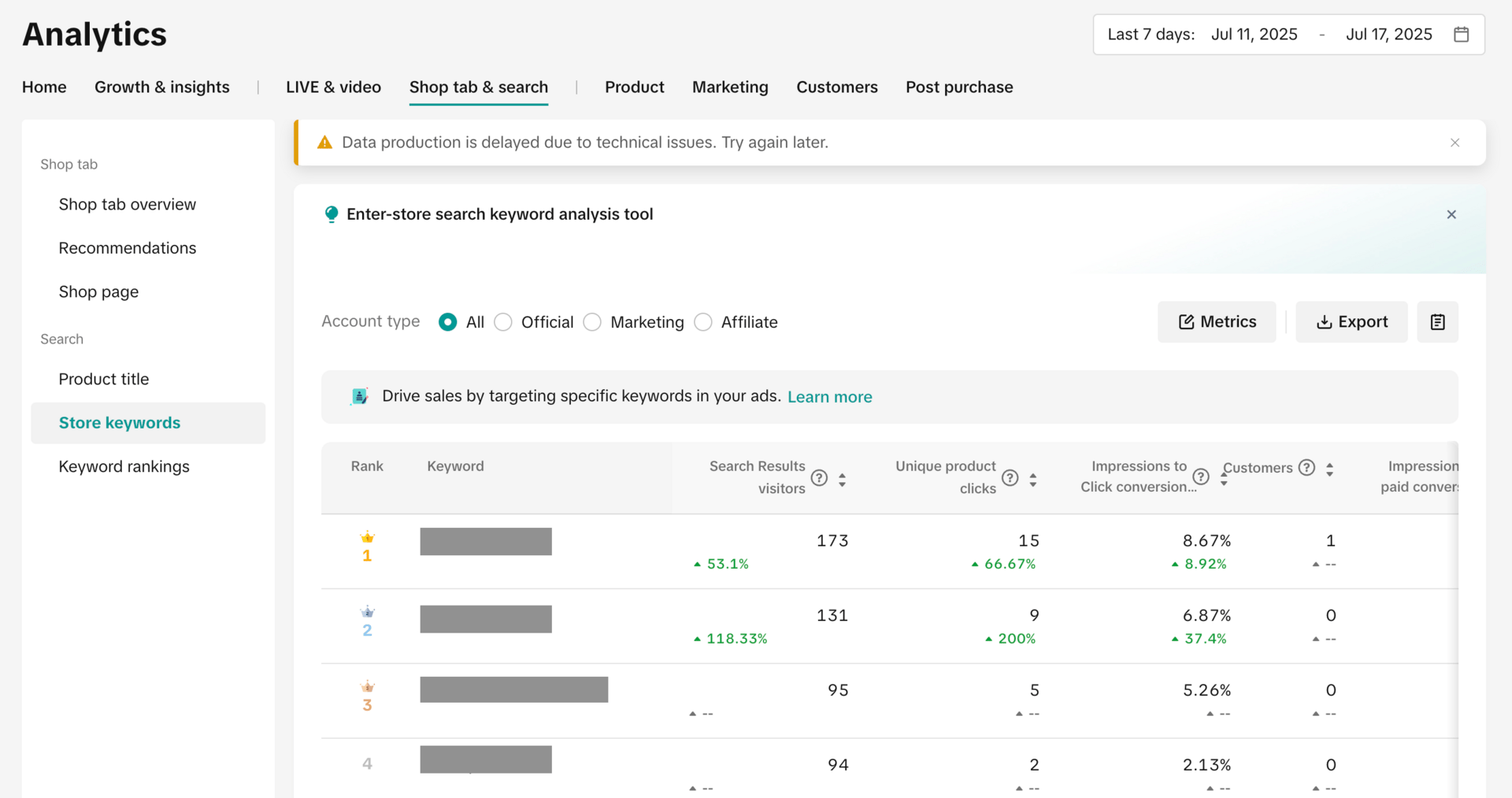- TikTok Shop Playbook
- Posts
- Tactical wins hiding in plain sight to unlock more TikTok Shop sales
Tactical wins hiding in plain sight to unlock more TikTok Shop sales
One of the most under-leveraged advantages you have as a TikTok Shop seller is the data and suggestions sitting right inside your Seller Center and Analytics tabs.
The problem? Most people either don’t know where to look—or they treat TikTok’s recommendations like afterthoughts.
This newsletter is going to help you change that.
We’re going to break down four highly tactical ways to use the built-in data and recommendations inside TikTok Shop to drive more traffic, improve your listings, and gain keyword visibility.
Let’s dive in:

1. The “Recommendations for You” Section in Seller Center is Better Than You Think
When you log into Seller Center, one of the first things you’ll see is a panel titled “Recommendations for you.”
Most people ignore this completely—but it’s actually one of the most useful sections to scan weekly.
TikTok uses machine learning to analyze your shop behavior and performance, and then surfaces suggestions in real-time. While you should always take platform recommendations with a grain of salt, we’ve found them to be pretty accurate, especially in these four areas:
a) Manage Products
Get specific insights on:
Which products are under-optimized
Which items have high potential but low exposure
Which SKUs may benefit from a price tweak, better cover image, or added product video
TikTok will often nudge you to improve listings that are sitting on the edge of going viral but are held back by poor visuals or metadata.
b) Shop Ads
While GMV Max automated campaign is currently the only way to run ads directly through TikTok Shop, the Shop Ads section still provides valuable suggestions—particularly around timing promotions to improve ad performance.
For example:
TikTok may recommend running a flash sale to increase conversion rates, which in turn makes your products more competitive in GMV Max campaigns.
🧠 Pro tip: You can't manually control ads inside Shop, but you can influence performance by aligning price incentives and promos with TikTok’s algorithm suggestions.
c) Shop Design

You’ll get reminders to improve layout, like:
Adding a banner or featured product row
Filling in your “About” section
Highlighting a limited-time promotion
If your bounce rate from your Shop page is high, it’s worth paying attention here.
d) Affiliate Center
This is where you’ll be prompted to:
Open plans for high-converting products not yet shared with creators
Adjust commission rates to stay competitive
Send target invites to recommended creators
🧠 Pro tip: Even if you don’t follow all of the suggestions, use this panel to build your weekly optimization checklist.
2. The Analytics Tab Is Quietly Becoming a Powerhouse

If you haven’t looked at the “Shop Tab & Search” section inside Analytics recently, now’s the time.
TikTok has quietly rolled out several new features in here, and it’s one of the best ways to understand how customers are discovering your shop, what TikTok is recommending on your behalf, and how to capitalize on trending search behavior.
a) New Traffic Source Breakdown

Inside “Shop Tab & Search,” you can now break traffic down into:
Search & Feed (For You page and beyond)
Promotion Channels (ads, affiliate links, etc.)
Shopping Tools (like carousels, bundles, and coupons)
Why this matters:
If 70% of your traffic is coming from “search,” but you’re only running feed-based ads, there’s a misalignment. Or if you’re not optimizing for shopping tools (like bundles), but they’re driving significant GMV, that’s a missed opportunity.
b) Daily Product Recommendations
Here’s a big one: TikTok is now showing how many products your shop is being recommended per day.
You’ll see:
Which products are being recommended to users (and where)
Optimization tips to increase recommendations (e.g. improve main image, add a video, price adjustment)
The relationship between listing quality and recommendation frequency
This is as close as you’re going to get to insider guidance on how the TikTok Shop algorithm works.
3. Keyword Rankings = The Most Underused Growth Lever on TikTok Shop
This section deserves its own spotlight.
Inside the same “Shop Tab & Search” area, there’s a goldmine:
Store Keywords
Keyword Rankings
These two tools alone can help you:
Reverse engineer demand
Optimize your listing titles, descriptions, and backend tags
Plan search-based ad campaigns
Spot rising trends before your competitors do

a) Store Keywords
This tells you exactly which keywords your products are currently ranking for.
Most sellers don’t even know this exists. It’s like seeing behind the curtain—knowing what TikTok thinks your products are relevant for.
You can then:
Add missing high-opportunity keywords to your titles or bullet points
Create creator briefs that emphasize those words in their scripts or captions
Use it to validate whether you’re being discovered for the right terms
b) Keyword Rankings
Want to see what’s trending today across the platform?
This section shows:
Trending keywords (based on search volume increases)
Rising keywords (those that are gaining momentum but haven’t exploded yet)
This is perfect for:
Sourcing new products
Spotting seasonal surges (e.g., “Father’s Day gifts,” “summer jelly sticks”)
Building ad creative around what buyers are currently searching for
We’ve seen clients use this to identify underutilized keywords, add them to their product listings, and see a 15–30% lift in impressions over few weeks.
TL;DR – 15 Minutes a Week Can Move the Needle
If you’re overwhelmed, just pick one of these actions to do weekly:
Spend 5 minutes reviewing your “Recommendations” panel in Seller Center
Check the “Shop Tab & Search” section in Analytics for top traffic sources
Identify one high-potential product and follow the optimization tips TikTok suggests
Look at your keyword rankings and add 1–2 new keywords to a product title or ad
Most sellers ignore these features. The ones who don’t usually win.
And the best part? These insights are free and already sitting in your dashboard.